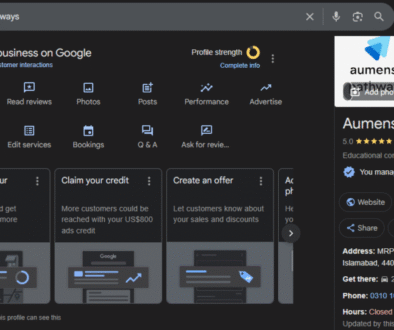On-Page SEO Best Practices Every Business Website Should Follow
TL;DR: On-page SEO ensures your website ranks higher and attracts qualified traffic. By optimizing titles, headings, content, images, and internal links, businesses improve visibility, user experience, and conversions. These best practices help build authority and long-term search engine success.
Why On-Page SEO Matters for Every Business Website
If your website isn’t optimized, even the best design won’t help you reach customers. On-page SEO services for businesses ensure that your site not only looks great but also communicates effectively with search engines and real users.
Well-executed on-page SEO boosts visibility, builds trust, and drives targeted traffic — the kind of visitors most likely to convert into leads or customers.
1. Start With Keyword Research and Placement
Every page should focus on a primary keyword and a few secondary variations. Place these naturally in:
- Page title (H1)
- Meta description
- Subheadings (H2s/H3s)
- First 100 words of content
- Image alt text
This helps search engines understand what your content is about while keeping it user-friendly.
2. Optimize Title Tags and Meta Descriptions
- Keep title tags under 60 characters, with your main keyword.
- Write meta descriptions under 160 characters, persuasive and click-worthy.
- Example: “Affordable On-Page SEO Services for Businesses | Boost Rankings & Conversions.”
These small elements make a big difference in whether someone clicks your link or scrolls past.
3. Improve Content Structure for Readability
Search engines favor content that’s easy to digest. Use:
- Clear H2/H3 headings for logical flow
- Short paragraphs and bullet points
- Internal links to related services or blogs
This enhances both user experience and crawlability.
4. Optimize Images and Media
Large, unoptimized images can slow your site down, hurting both SEO and user experience. Best practices include:
- Compressing images before upload
- Using descriptive file names (e.g., seo-best-practices.jpg)
- Adding keyword-rich alt text
5. Improve Page Speed and Mobile Responsiveness
Google ranks fast, mobile-friendly websites higher. Ensure:
- Your pages load in under 3 seconds
- Content adapts to all devices
- Fonts, buttons, and forms are user-friendly on mobile
6. Use Internal Linking Wisely
Linking between your own pages builds site authority and keeps users engaged longer. For example, your Web Design Services page should link to your SEO Services page, guiding users deeper into your offerings.
7. Don’t Forget About Technical Elements
On-page SEO connects with technical SEO too. Make sure you:
- Use HTTPS for site security
- Submit an XML sitemap to Google
- Check for broken links or crawl errors
Final Thoughts
On-page SEO is not a one-time task but an ongoing effort. By applying these best practices, your website becomes more visible, engaging, and effective at driving conversions.
If you’re ready to improve your business website with professional on-page SEO services, start small, stay consistent, and let the results build over time.



